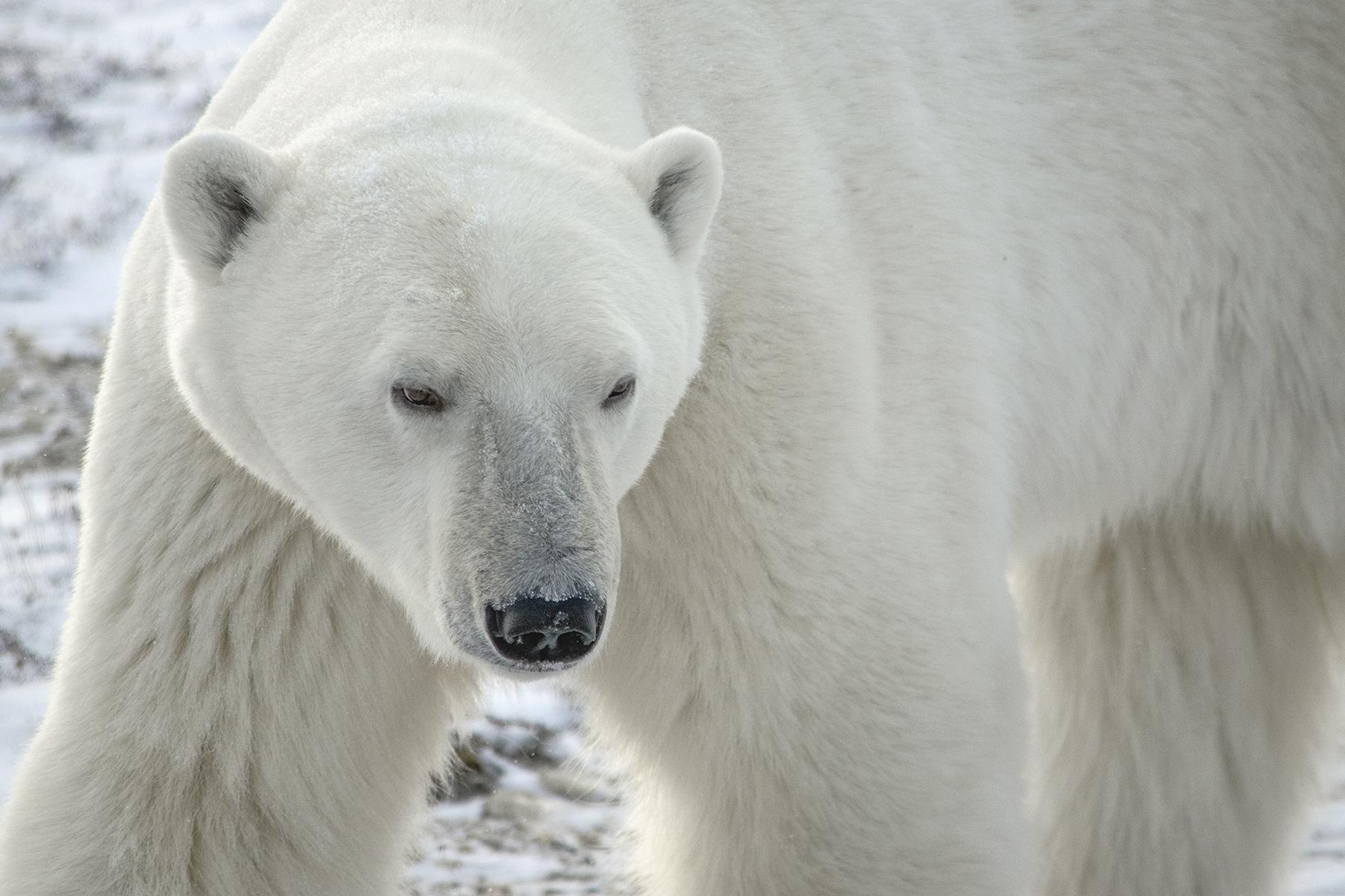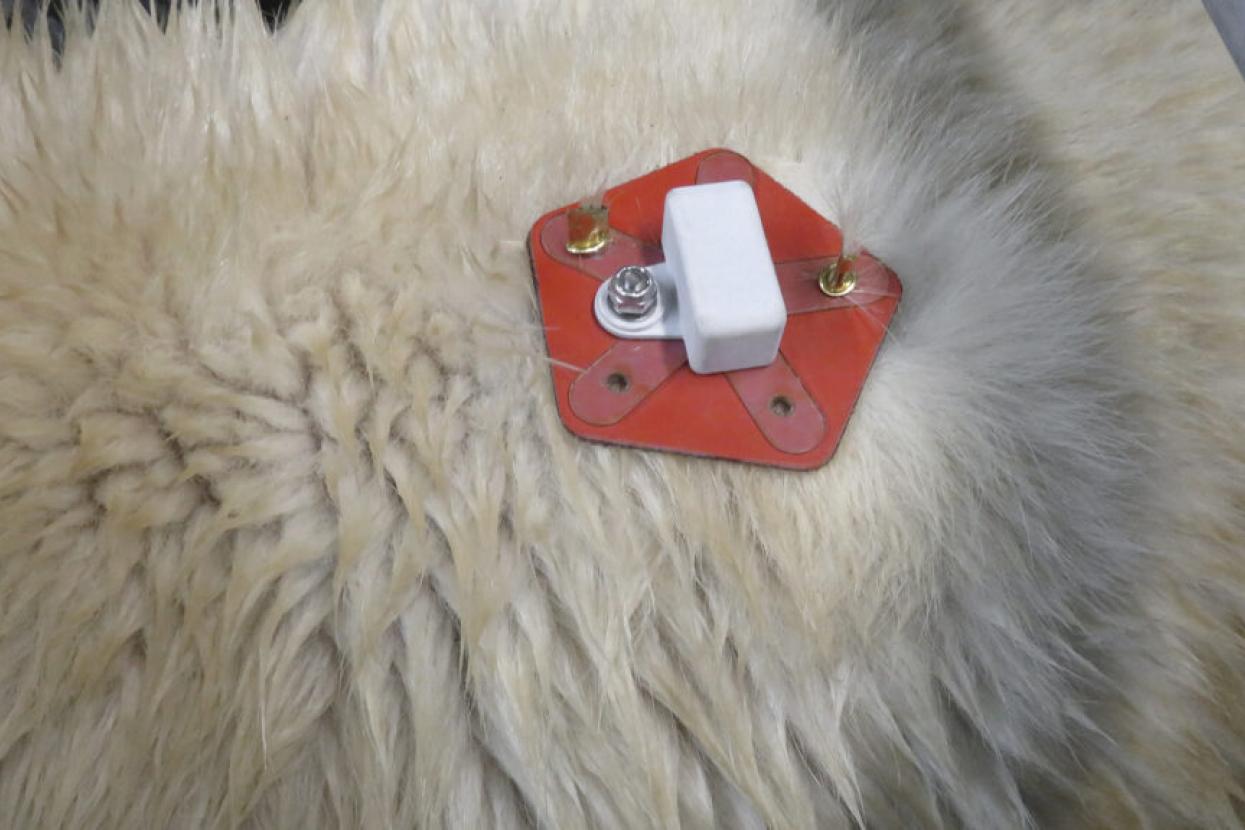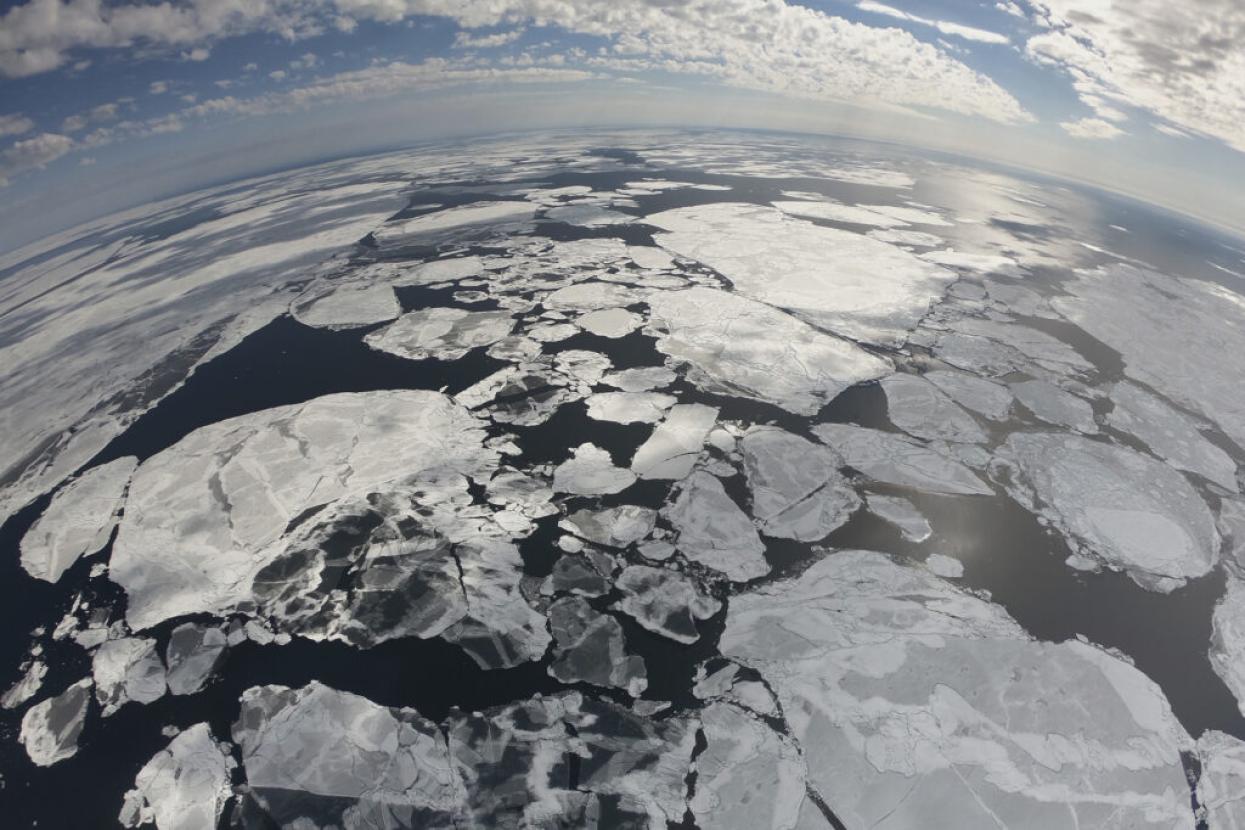
Zoo Polar Bears Aid Conservation Work
Polar bears live in one of the harshest environments on the planet: the sea ice of the Arctic. Spanning an area three times the size of the continental United States and more than 35 degrees of latitude, polar bears roam across areas that can get as cold as -50 degrees Fahrenheit, and in winter are covered by 24 hours of darkness. To study polar bears, conservation scientists are constantly looking for new ways to gain insight and add value to research methods. Increasingly, scientists are turning to polar bears living in zoos to help fill knowledge gaps, including Tatqiq, Kalluk, and Chinook here at the San Diego Zoo.
Bear Hair Study
When bears are sedated in their native habitat for conservation research and management, biological samples, including hair, often are collected. Hair can provide valuable insight into polar bear diet, stress, and even pollutants that have accumulated. When analyzed in a laboratory, stress hormones and pollutants will show up in the results, giving scientists valuable insight. However, a key aspect of the sample information was missing: how long does it take to grow polar bear hair? If scientists could understand this more precisely, they could then understand the length of time reflected in the laboratory measurements of wild samples.
In 2020, 19-year-old female polar bear Tatqiq was chosen to help answer this question. Working with polar bear scientists from the United States Geological Survey and the University of Washington, wildlife care specialists were able to dye a large spot of fur on her rump. She was fed a meatball containing a biomarker two times over the course of the year-long study, which would then show up during analysis (the biomarker was completely harmless to her). Then, every week for an entire year, a hair sample was non-invasively collected from the dyed patch. Once analyzed, the researcher would be able to locate the biomarkers in the hair samples and, knowing the dates they were consumed, measure how far apart they appeared in the hair samples, therefore determining how fast polar bear hair grows.
Noninvasive tracking devices help scientists study individual bears over time.
Burr on Fur
Up until recently, all the data on wild polar bears collected via tracking collars was only from adult female bears. You might ask why. It all relates to how polar bears are built. Male bears have incredibly large necks— bigger in circumference than their heads. This means a collar placed on them will easily slip off as soon as they tilt their heads down toward the ground.
In collaboration with 3M, partner organization Polar Bears International began creating different prototypes of possible devices that could be used to study juvenile and male polar bears. These tracking tags would attach directly to the bear’s fur between their shoulder blades, allowing them to be placed on any bear, regardless of age or sex. Since bears naturally shed their fur seasonally, the devices would eventually drop off on their own. In 2021, the prototypes were sent to several zoos for testing. Two of our bears (27-year-old female Chinook and 21-year-old male Kalluk) were chosen to wear the devices to look at things such as how sturdily they attached to the bear, if the bears were able to get them off/how long they stayed on, or if they broke. This testing allowed for improvements to be made to the devices at a much quicker and more efficient rate than if they were tested out in the middle of the Arctic tundra. Our bears were able to rub the devices off within two days. Once they were off, the devices were sent back to the scientists to allow for the necessary modifications.
Keeping Track
San Diego Zoo Wildlife Alliance (SDZWA) researchers are currently working on many different conservation projects involving polar bears, including in Canada, which is home to two-thirds of the world’s remaining polar bears and is projected to have the last remaining sea ice refuge. There we work with our partners at Environment and Climate Change Canada, the University of Alberta, and the University of Manitoba on understanding the health, movement, and population status of polar bears.
Our fieldwork primarily occurs in the Hudson Bay, home to the world’s best- and longest-studied population of polar bears. Each year we assist in the deployment of GPS ear tag transmitters on polar bears, which allows us to monitor migratory pathways and habitat use. In addition to deploying tags, we also collect physical measurements and biological samples and inventory the bears for population management. The biological samples have provided us insight into the health of the polar bear population, including a study we recently led examining exposure to infectious disease pathogens. The biological samples also provide genetic information, giving a wide range of indicators about how the bears are being affected by rapid environmental change. Our current postdoctoral associate, Dr. Ruth Rivkin, is leading a study to understand how the genetic makeup of polar bear populations is changing now and will likely change due to future sea ice conditions. These assessments will allow us to explore potential future conservation management actions such as assisted migration and genetic rescue. In Svalbard, Norway, we have a multiyear study on maternal dens. Svalbard is a critical high-Arctic denning area for female polar bears, and they use the steep snow-covered slopes to dig their dens and birth their cubs. We have been working with our partners at Polar Bears International and the Norwegian Polar Institute to deploy remote cameras that can monitor the den sites. The data gathered gives us insights into how mother polar bears are coping with environmental change and how they behave with their young outside of the den before taking them on a life-changing journey to the sea.
Polar bears depend on sea ice for their survival and, in some areas, for maternal dens for the birthing and raising of cubs.
Our polar bear conservation research extends into the far reaches of the circumpolar Arctic. We collaborate with partners across the Arctic on cutting-edge research to understand how polar bears are being affected by climate change and work together to provide conservation solutions.
Take a deeper look at our Oceans Conservation Hub to learn more about how we’re working to save, protect, and care for the wildlife that calls this habitat home.






